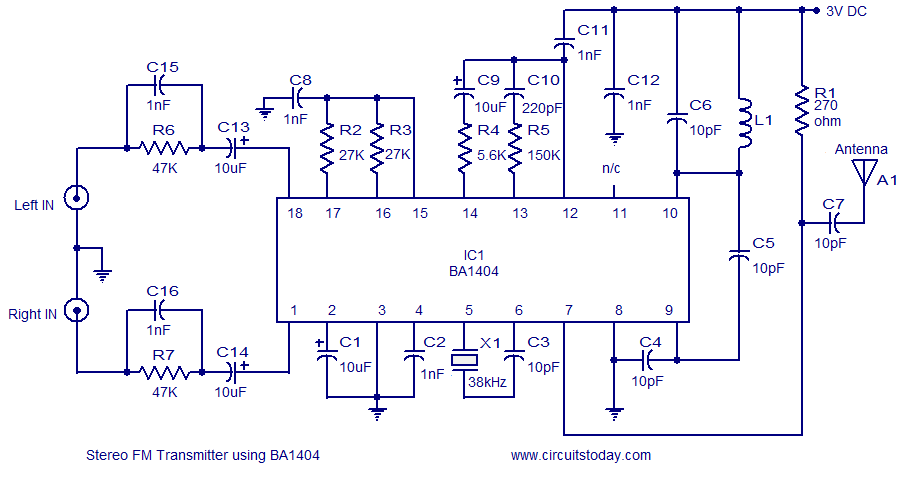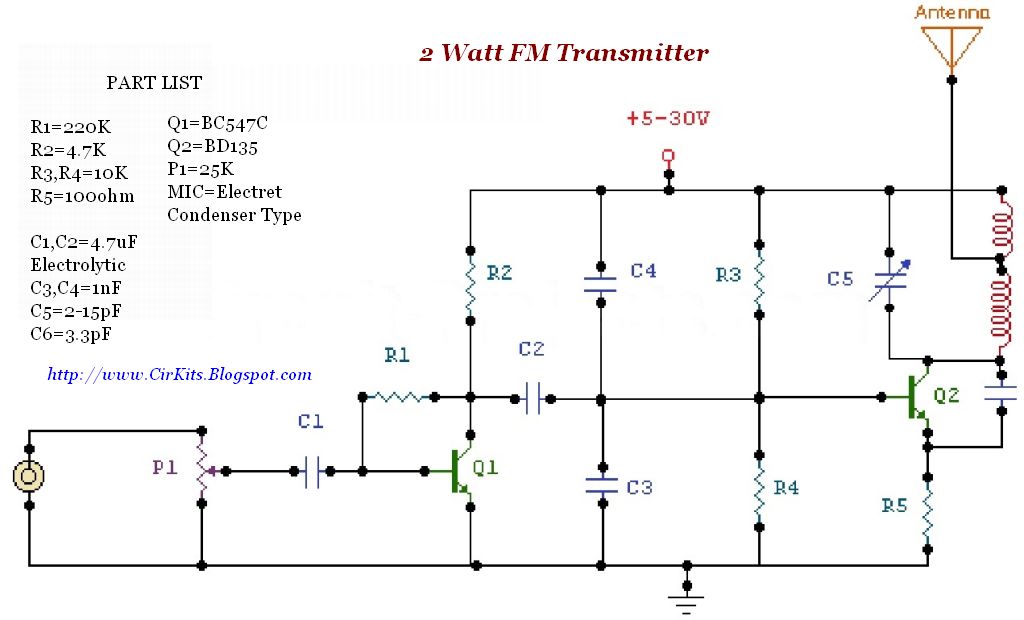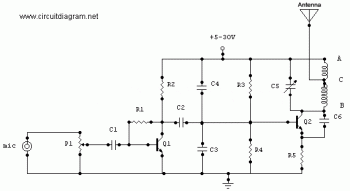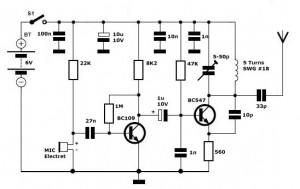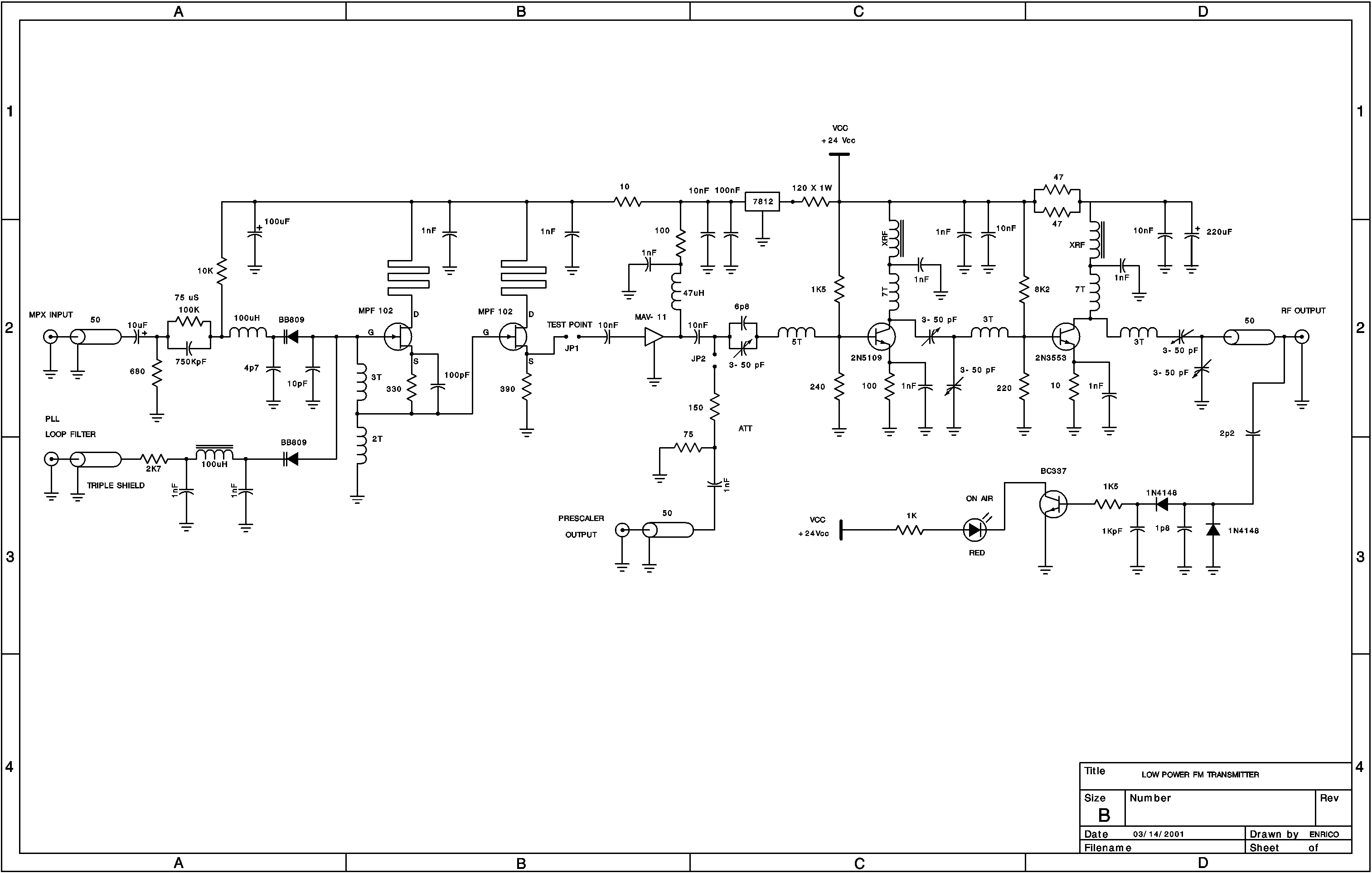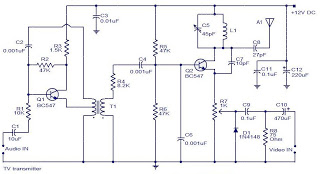
VHF FM Transmitter MAX2606
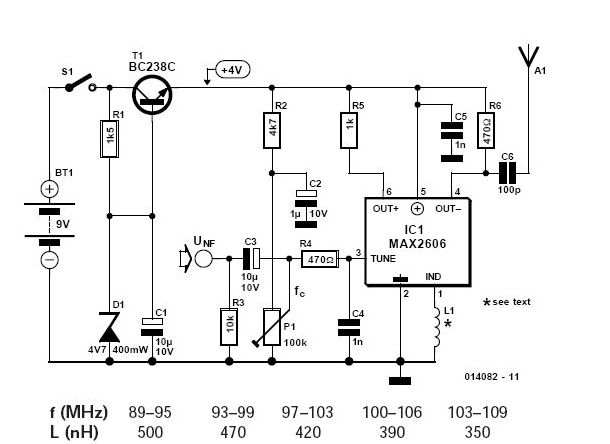
To achieve independence from local radio stations when testing VHF receivers, a frequency-modulated oscillator is required that operates within the range of 89.5 to 108 MHz. However, constructing such an oscillator using discrete components can be quite challenging. Maxim has introduced a series of five integrated oscillator building blocks in the MAX260x series.
The MAX260x series provides a practical solution for generating frequency-modulated signals within the VHF range, specifically tailored for applications such as testing VHF receivers. Each integrated oscillator in this series is designed to simplify the construction process by incorporating essential functions and components into a single package. This integration reduces the complexity associated with discrete component designs, which often require precise tuning and additional circuitry for stability and performance.
The MAX260x oscillators feature a wide frequency tuning range, allowing users to easily adjust the output frequency to any desired point within the 89.5 to 108 MHz range. This flexibility is particularly beneficial for testing receivers across various frequencies within the FM broadcast band. Additionally, the integrated design minimizes the need for external components, which can help reduce the overall footprint of the circuit and enhance reliability by decreasing the number of potential points of failure.
The output of the MAX260x series oscillators is typically a high-quality frequency-modulated signal, suitable for driving VHF receivers directly. The devices are designed to maintain consistent performance characteristics, including low phase noise and high stability, which are critical for accurate testing and evaluation of receiver performance.
Overall, the MAX260x series represents a significant advancement in the design of frequency-modulated oscillators, providing engineers and technicians with a reliable and efficient tool for testing VHF receivers without dependence on local radio stations.If you want to be independent of the local radio stations for testing VHF receivers, you need a frequency-modulated oscillator that covers the range of 89.5 to 108 MHz ? but building such an oscillator using discrete components is not that easy. Maxim now has available a series of five integrated oscillator building blocks in the MAX260x series whic..
🔗 External reference
The MAX260x series provides a practical solution for generating frequency-modulated signals within the VHF range, specifically tailored for applications such as testing VHF receivers. Each integrated oscillator in this series is designed to simplify the construction process by incorporating essential functions and components into a single package. This integration reduces the complexity associated with discrete component designs, which often require precise tuning and additional circuitry for stability and performance.
The MAX260x oscillators feature a wide frequency tuning range, allowing users to easily adjust the output frequency to any desired point within the 89.5 to 108 MHz range. This flexibility is particularly beneficial for testing receivers across various frequencies within the FM broadcast band. Additionally, the integrated design minimizes the need for external components, which can help reduce the overall footprint of the circuit and enhance reliability by decreasing the number of potential points of failure.
The output of the MAX260x series oscillators is typically a high-quality frequency-modulated signal, suitable for driving VHF receivers directly. The devices are designed to maintain consistent performance characteristics, including low phase noise and high stability, which are critical for accurate testing and evaluation of receiver performance.
Overall, the MAX260x series represents a significant advancement in the design of frequency-modulated oscillators, providing engineers and technicians with a reliable and efficient tool for testing VHF receivers without dependence on local radio stations.If you want to be independent of the local radio stations for testing VHF receivers, you need a frequency-modulated oscillator that covers the range of 89.5 to 108 MHz ? but building such an oscillator using discrete components is not that easy. Maxim now has available a series of five integrated oscillator building blocks in the MAX260x series whic..
🔗 External reference
